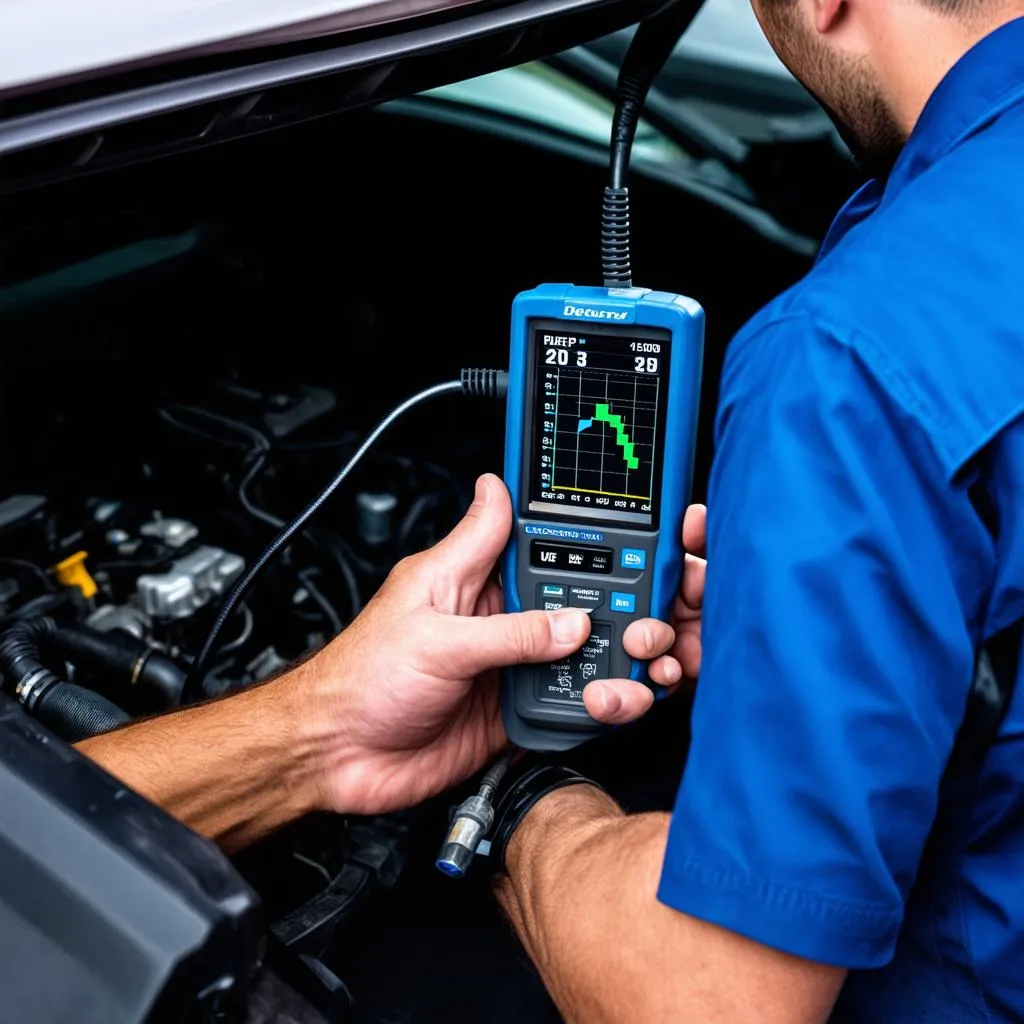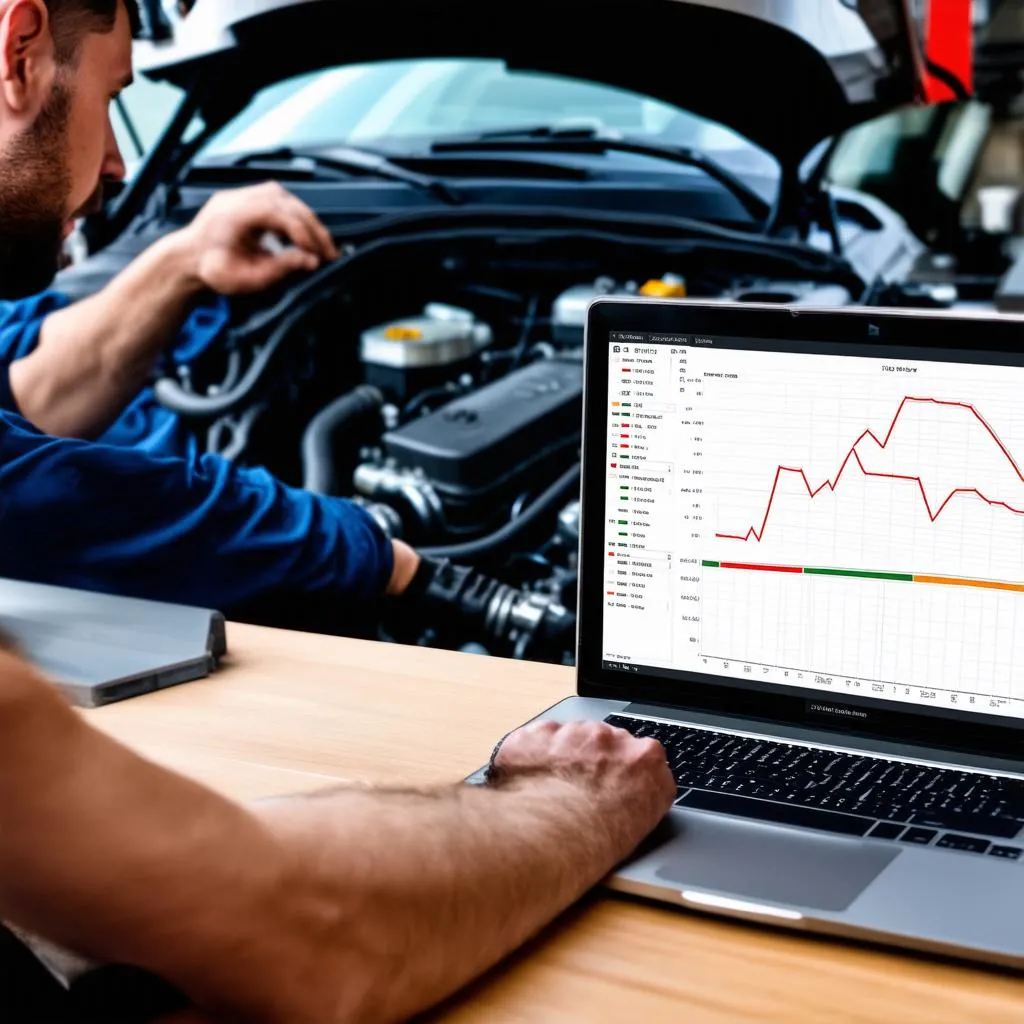Imagine this: you’re driving down a California highway in your trusty Ford Focus, when suddenly, the “check engine” light pops up. You pull over, heart sinking. What’s wrong? Is it something serious? A quick trip to the mechanic and a hook-up to a scan tool later, and he’s talking about “live data” and “oxygen sensor readings.” You nod politely, but inside, you’re thinking, “What in the world is live data?”
Don’t worry, we’ve all been there. In this article, we’ll demystify “live data” and explain how it’s used to diagnose car problems, just like a doctor uses an EKG to understand your heart.
Unmasking the Mystery: What Does “Live Data” Mean?
In simple terms, live data is like a live feed of information from your car’s computer, the Engine Control Unit (ECU). Think of it as your car’s nervous system, constantly monitoring and adjusting various systems to keep everything running smoothly. When you plug in a scan tool, specifically a dealer scanner for European cars or any other vehicle, it taps into this stream of live data, giving you a real-time look at what’s happening under the hood.
Why Should I Care About Live Data?
For car owners, understanding live data might seem like venturing into a mechanic’s territory. However, having a basic grasp can be surprisingly beneficial:
- Early Detection: Live data can reveal subtle changes in your car’s performance, often before a problem becomes noticeable or triggers a warning light. This early detection can save you from costly repairs down the line.
- Informed Decisions: Imagine discussing your car issues with a mechanic, armed with a basic understanding of the live data readings. You’ll be better equipped to understand the diagnosis, ask the right questions, and make informed decisions about repairs.
Live Data in Action: A Real-World Example
Let’s say your BMW X5 has been experiencing rough idling. You take it to a mechanic, who hooks up a scan tool. By looking at the live data for the Mass Air Flow (MAF) sensor, he notices that the readings are fluctuating erratically. This information, combined with other symptoms, allows him to pinpoint a faulty MAF sensor as the culprit.
Decoding the Data Stream: Key Live Data Parameters
While a professional mechanic will have an in-depth understanding of interpreting live data, familiarizing yourself with some key parameters can be helpful:
- Engine RPM (Revolutions Per Minute): Indicates how fast your engine is spinning.
- Vehicle Speed Sensor (VSS): Tells you how fast your car is going.
- Coolant Temperature: Monitors the temperature of your engine coolant, essential for preventing overheating.
- Oxygen Sensors (O2): Measure the amount of oxygen in your car’s exhaust, helping to optimize fuel combustion and emissions.
FAQs: Unraveling Common Queries about Live Data
Q: Can I access live data myself?
A: Absolutely! While professional-grade scan tools offer more advanced features, affordable OBD-II scanners are available for car owners who want to delve into their vehicles’ live data.
Q: Is live data the same as reading error codes?
A: Not exactly. While error codes tell you something is wrong, live data provides real-time insights into the specific parameters causing the issue, helping to diagnose the root cause.
Q: Can I use live data to improve my car’s performance?
A: While not recommended for beginners, experienced tuners can use live data to make adjustments to a car’s engine and transmission settings, potentially enhancing performance.
 Mechanic using a scan tool to view live data
Mechanic using a scan tool to view live data
Beyond the Basics: Advanced Applications of Live Data
While we’ve covered the fundamentals, live data has even more to offer:
- Emissions Testing: In some areas, live data is used during emissions inspections to ensure vehicles meet environmental standards.
- Component Testing: Mechanics can use live data to test the functionality of specific components, like fuel injectors or ignition coils, without having to physically remove them from the vehicle.
Expert Insights
“Live data is an indispensable tool for any serious automotive technician,” says automotive electronics expert, Dr. Emily Carter, author of “Automotive Diagnostics in the Digital Age.” “It allows us to move beyond simply reading error codes and delve into the intricate workings of a vehicle’s systems, leading to more accurate diagnoses and effective repairs.”
 Laptop displaying car diagnostic software with live data graphs
Laptop displaying car diagnostic software with live data graphs
Unlocking the Power of Live Data: Empowering Car Owners and Mechanics Alike
Live data, once a mysterious realm accessible only to mechanics, is becoming increasingly accessible to car owners. By understanding the basics, you can become a more informed car owner, better equipped to understand your vehicle’s health and make decisions about maintenance and repairs. And for mechanics, live data remains an essential tool, providing real-time insights that lead to faster, more accurate diagnoses.
Need help setting up your diagnostic tools or interpreting live data? Our team of automotive experts is just a WhatsApp message away at +84767531508. We’re available 24/7 to provide guidance and support.
Looking to learn more about professional scan tools and how to use them? Check out our other articles:
We hope this article has shed some light on the often-confusing world of live data. Drive safely and stay informed!


